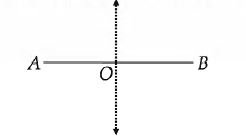Q.
A particle executes simple harmonic motion of period $T$ and amplitude $l$ along a rod $A B$ of length
$2l$. The rod $A B$ itself executes simple harmonic motion of the same period and amplitude in a direction perpendicular to its length. Initially, both the particle and the rod are in their mean positions. The path traced out by the particle will be
Solution: